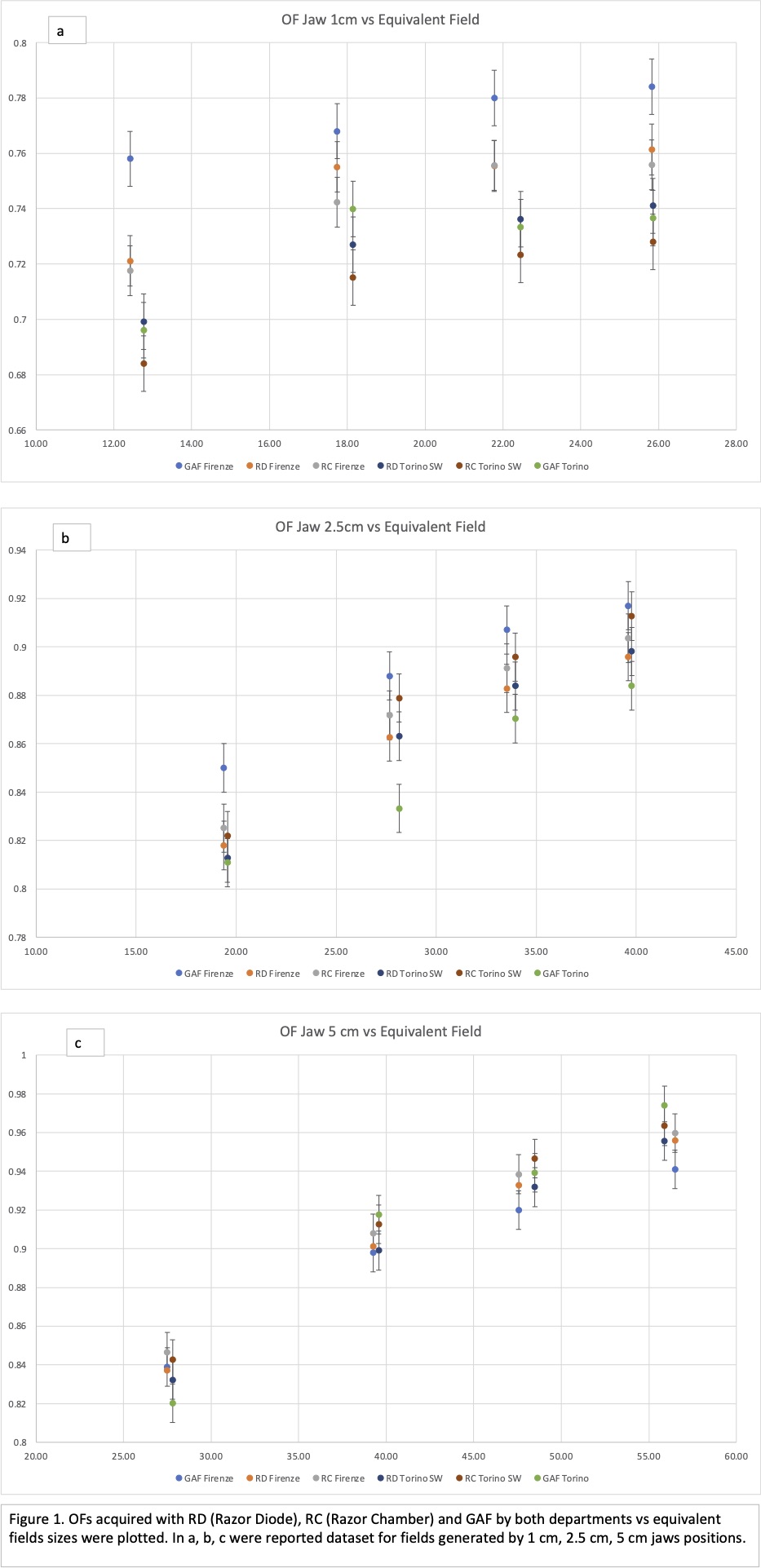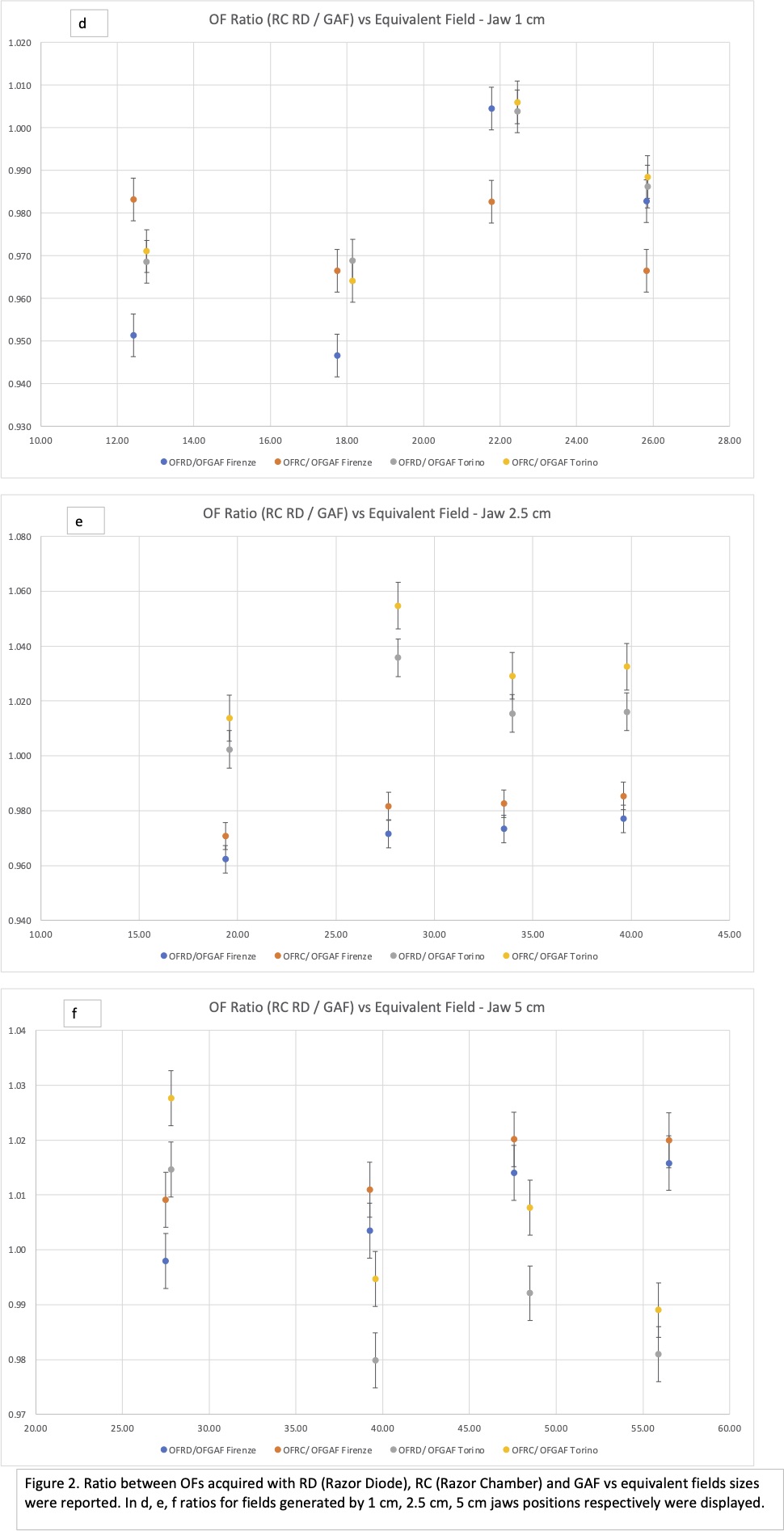New protocol for small fields dosimetry in tomotherapy: an inter-department validation
PO-1763
Abstract
New protocol for small fields dosimetry in tomotherapy: an inter-department validation
Authors: Cinzia Talamonti1, Chiara Arilli2, Elena Gallio3, Livia Marrazzo1, Stefania Pallotta1, Serenella Russo4, Francesca Romana Giglioli5
1University of Florence, Dept. of Experimental and Clinical Biomedical Sciences "Mario Serio", Florence, Italy; 2Azienda Ospedaliero Universitaria Careggi, Medical Physics Unit, Florence, Italy; 3Azienda Ospedaliero Universitaria Città della Salute e della Scienza, Medical Physics Unit, Torino, Italy; 4Azienda USL Toscana Centro, S.C. Fisica Sanitaria, Florence, Italy; 5Azienda Ospedaliero Universitaria Città della Salute e della Scienza, Medical Physics Unit , Florence, Italy
Show Affiliations
Hide Affiliations
Purpose or Objective
The focus of this study was a definition of a consistent dataset for small fields dosimetry in tomotherapy in order to harmonize the expertise of different Italian radiotherapy centers and encouraging data standardization. The preliminary data of the reference department (Florence Hospital) and of the pilot center (Torino Hospital) were here presented.
Material and Methods
A specific set of 12 small fields was defined by the MLC (1.25, 2.5, 3.75, 5 cm) and by the jaws (1, 2.5, 5 cm). For all fields, output factors (OFs) in a 3D water phantom (Blue Phantom Helix) were measured at the reference department for an Hi-Art tomotherapy equipment by using two detectors: Razor Chamber (RC) and Razor Diode (RD). A protocol with the instructions was prepared by the reference site together with the sinograms of the open fields. Measurements in a solid water phantom were performed at the pilot center for a Radixact tomotherapy equipment by using the same RC and RD detectors. OFs were assessed at a reference 10x5 cm2 field at 85 cm SSD and 10 cm of depth. Measurements with EBT3 film (GAF) were also acquired in a solid water phantom by both departments to establish a preliminary reference dataset. Moreover an evaluation of effective equivalent fields s was done. The pilot center reviewed the final procedure.
Results
In the figure 1, OFs of both departments were plotted vs measured equivalent fields s. RC and RD showed a good inter-department agreement with deviations less than 1% for 5 cm and 2.5 cm jaws positions. For 1 cm jaw’s , deviations within 5% were observed.

In the figure 2 the OFs ratios between RC, RD and GAF values were reported. RC and RD were within 3% from GAF values for 5 cm jaw’s (in both datasets) but showed higher deviations for 2.5 cm and 1 cm jaws positions (with a maximum deviation within 6%). The fields s were consistent with the nominal one in both departments and discrepancies less than 1 mm were evidenced between the two dataset.

Conclusion
A preliminary dataset of a standardization project involving several Italian departments was presented. The pilot center values were consistent with the reference one in small fields generated by 5 cm and 2.5 cm jaws positions, also comparing water phantom with solid water acquisitions. Discrepancies, found between the reference and pilot dataset, may be due to different equipment models, this will be evaluated by enrolling other pilot centers to the study. An analysis including all other italian departments will be taken on for smaller fields (1 cm jaw’s ) especially in order to establish a GAF reference dataset. Eventually, correction factors for the detector (here investigated and not present in TRS 483 protocol), could be calculated.